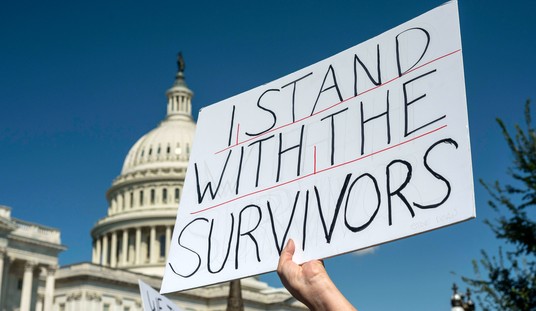“What a nice Halloween,” my wife remarked as we turned out the lights last Tuesday night.
Well, not so much in nearby Oakton, Virginia, where Jamie Stevenson, a new homeowner, walked past her neighbor’s house and saw “a racist display.”
“She knew it was a Halloween decoration,” the Washington Post reported, “but she also saw in it something more sinister: a lynching.”
Stevenson snapped a picture and then contacted the homeowners’ association and the friendly hate merchants at the Southern Poverty Law Center. But she didn’t forget about the perpetrator. “What you appear to be displaying is an effigy of a black person being lynched,” she emailed him. “As your neighbor and a person of color [Stevenson is Asian], I find this racist. I find this deeply offensive. I’m sure this is not your intent.”
She asked them to “remove this racially-loaded effigy . . . for the good of the neighborhood.”
“It is not my intent to offend anyone,” was her neighbor’s immediate and predictable response to her email. “I never realized the Monster in the tree had darker skin. If you see it up close it is indeed a Monster with blood clawed head and face.”
Explaining that he is “frantically preparing for Halloween,” her neighbor offered, “I can’t promise I will have it down by Halloween but I can promise you this — I will NEVER ever put it up again.”
But then, the next day, last Sunday, he did manage to take it down . . . in the rain.
All is well that ends well, eh?
Not on your life.
Recommended
One might think that, with Stevenson’s sensitivity, she wouldn’t perform her own social media lynching — or “doxing”— against her neighbor. But the next day, having acknowledged that no offense had been intended and with the offending display having been removed, Stevenson still posted “a flier” on Facebook with a photo of an actual 1889 lynching next to the picture she had taken of her neighbor’s Halloween display, declaring: “RACISM and HATE have no place in our neighborhood.”
She further called for a boycott of her neighbor’s free Halloween candy . . . and handily provided his home address.
That’s the “doxing” part. I am sure in the days of low-tech lynching you could always find a special someone in the neighborhood willing to give directions to the main event.
This led to a knock on Stevenson’s door and an attempt to talk face to face, which ended with Stevenson filing a police report, saying she felt threatened. No charges have been filed, nor arrests made, however.
Stevenson “acknowledged,” notes the Post, “that in recent conversations with her neighbors, many rejected her interpretation of it.”
“We never looked at it that way,” said neighbor Leisa Branton, who has been admiring the holiday display for 20 years now. “I mean, maybe it’s our ignorance, but we thought it was ghouls and goblins.”
Branton also felt bad for the family, which had been publicly attacked after having “put a lot of decorations up and a lot of time into it.”
“[W]hen you point out racism, people have a choice to make,” Stevenson insisted. “They either acknowledge it and have to do something about it, or they deny it and are complicit in it.”
Or then again, neighbor, maybe you’ve got racism on the noggin, smearing people with outrageous slanders — good folks, who are only complicit in sharing a traditional joy with the neighborhood kids.
“The Halloween display began as an activity they did with their own children and grew as they saw how much other young people in the neighborhood enjoyed it,” explained the Post.
Now, after being publicly labeled a racist last week, Stevenson’s neighbor expressed “fear for the safety of my kids and the safety of my house.”
The average cost of a home in that Oakton neighborhood? $750,000.
The value of a good neighbor? Priceless.

























Join the conversation as a VIP Member